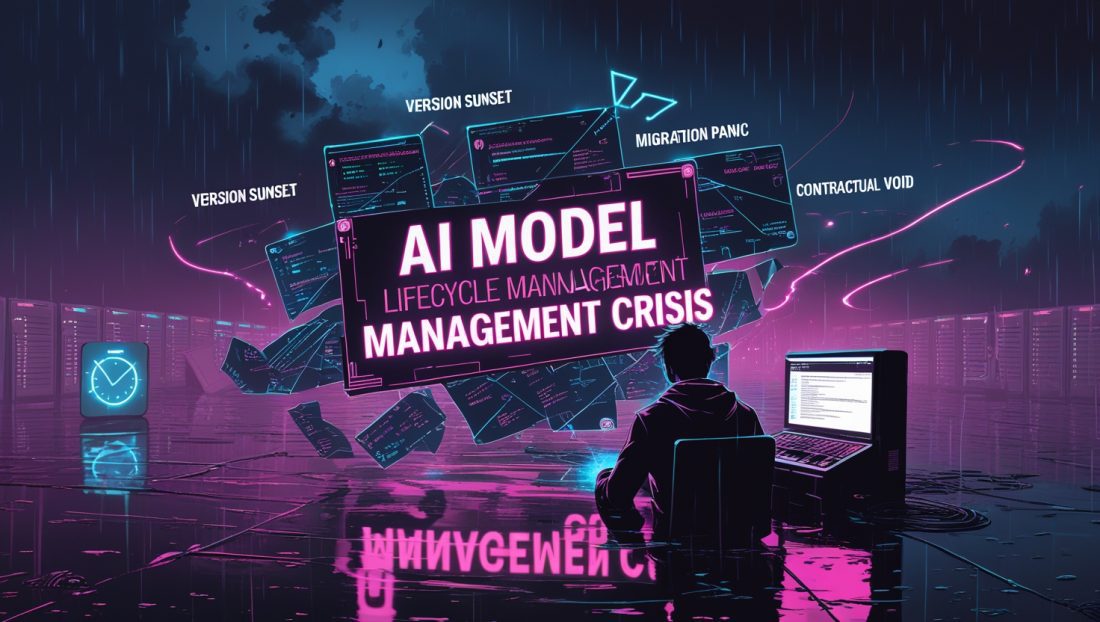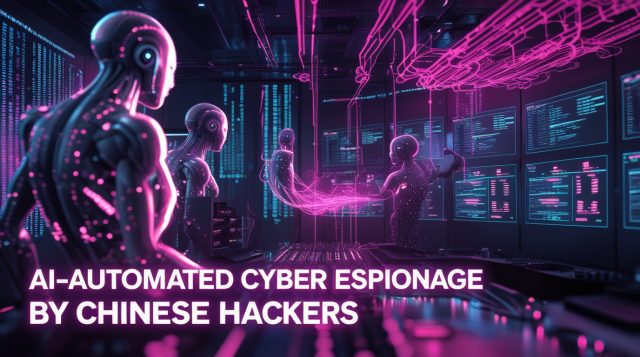The Ticking Clock
On June 18, 2025—less than a month before the deadline—OpenAI will permanently remove GPT-4.5 Preview from its API ecosystem, sparking an AI Model Lifecycle Management Crisis for developers. Third-party developers have until July 14 to dismantle integrations built around what many considered their most reliable model for nuanced tasks. While individual ChatGPT users retain dropdown access, the API shutdown forces enterprises to overhaul production systems with minimal transition time.
The decision isn’t sudden—OpenAI announced this during April’s GPT-4.1 launch—but the operational shockwaves reveal deeper fractures in industrial AI deployment frameworks. A developer’s frustration captures the sentiment: Deprecating after 4 months is insane. Barely had time to ship before they pulled it.
Why Industrial Users Championed GPT-4.5
The “Goldilocks” Phenomenon
GPT-4.5 (codenamed Orion) occupied a performance sweet spot that newer models struggle to replicate:
- Codebase Comprehension: Maintained contextual awareness of intricate repositories better than predecessors, adhering to developer-specified design patterns without inventing alternatives.
- Pedagogical Nuance: Excelled at balancing encouragement with precision in educational applications, particularly for physics and mathematics tutoring where error-free marking is critical.
- Emotional Resonance: Surpassed contemporaries in simulating understanding during negotiation preparation or therapeutic processing, despite lacking true consciousness.
Enterprise users described it as “the vintage guitar you play everything on”—unmatched in tone and reliability despite newer alternatives. Blue J, a tax analysis platform, reported it handled complex scenario testing with 53% higher accuracy than previous models.
This unique blend of capabilities made GPT-4.5 a cornerstone for industries leveraging AI-driven automation solutions. Its ability to parse complex datasets while maintaining user-friendly outputs was unmatched, especially in sectors like finance and education. For example, firms using AI for predictive analytics found GPT-4.5’s contextual depth critical for accurate forecasting.
This aligns with trends in industrial AI analysis boosting efficiency, where model reliability directly impacts ROI. For deeper insights into how AI enhances predictive tasks, explore resources like VentureBeat’s guide to AI-driven analytics.
The Deprecation Dilemma: Economics Versus Trust
The $75 Million Token Problem
GPT-4.5’s operational costs became commercially unsustainable:
| Model | Input Cost (per 1M tokens) | Output Cost (per 1M tokens) |
|---|---|---|
| GPT-4.5 | $75 | $150 |
| GPT-4.1 | ~$30 | ~$60–90 |
With 50–60% cost reductions, GPT-4.1 offered economic scalability despite user attachment to 4.5’s behavioral qualities. OpenAI’s assessment also flagged GPT-4.5’s latency issues and inadequate safety guardrails for mass deployment.
The cost disparity highlights a broader challenge in AI model scalability challenges. High computational demands not only inflate expenses but also raise environmental concerns, as seen in discussions around AI infrastructure sustainability. Enterprises must now balance performance with AI cost democratization trends, a topic explored in depth by Forbes on AI’s environmental footprint.
The Lifecycle Crisis
At just 4.5 months of commercial availability (February–July 2025), this marks OpenAI’s shortest-lived API model. Developers now confront:
- Rebuild Costs: Startups report weeks lost retraining systems for GPT-4.1’s behavioral differences, particularly its literal interpretation style.
- Eroded Trust: Rapid obsolescence discourages long-term investment; Thomson Reuters’ AI lead confirms they’re diversifying model vendors after this episode.
- Vendor Lock-In Anxiety: As Raindrop.AI’s Ben Hyak tweeted: o3 + 4.5 are the models I use most every day. Removing them feels like losing collaborators.
This rapid deprecation cycle underscores the need for AI vendor reliability strategies. Enterprises are increasingly wary of single-vendor dependency, a concern echoed in analyses of agentic AI in supply chain management, where diversified AI ecosystems mitigate risks. Industry experts, like those at Moldstud, emphasize the importance of multi-vendor approaches to ensure operational continuity.
GPT-4.1: Technical Upgrade, Human Downgrade?
Performance Tradeoffs
While GPT-4.1 boasts measurable improvements, they’re not holistic replacements:
- Coding Prowess: 54.6% score on SWE-bench (21.4% absolute increase over GPT-4o).
- Instruction Adherence: 38.3% on Scale’s MultiChallenge benchmark.
- Context Handling: 1M-token capacity with enhanced comprehension.
Yet early adopters note GPT-4.1 behaves more mechanically losing 4.5’s nuanced interpretation. OpenAI acknowledges: We trained GPT-4.1 to be more explicit—demanding meticulous prompt engineering.
The shift to explicitness in GPT-4.1 highlights a gap in AI conversational nuance optimization. Developers must now invest in prompt refinement to achieve desired outcomes, a challenge also seen in AI-driven content discovery systems. This mechanical shift can disrupt user experiences, particularly in sensitive applications like education or mental health support.
Real-World Impact
- Windsurf: Observed 60% higher coding benchmark scores but 30% efficiency drop in tool calling workflows.
- Language Learning: Fictional edtech startup LinguaBot struggled when GPT-4.1 corrected Ukrainian refugee children’s minor grammar errors mid-conversation, shattering confidence built by GPT-4.5’s gentle approach.
These real-world impacts reveal the stakes of AI model transition challenges. In educational settings, where emotional intelligence is critical, GPT-4.1’s rigidity can hinder engagement. This mirrors broader concerns about AI in mental health early detection, where empathetic interactions are non-negotiable for user trust.
Industrial AI’s Inflection Point
The Sustainability Squeeze
OpenAI’s pivot reflects industry-wide pressures:
- Compute Economics: Frontier model costs outpace ROI (Anthropic’s Claude 3 costs $15/1M input tokens).
- Regulatory Heat: New U.S./U.K. “frontier AI” oversight targets high-risk systems.
- Scalability Demands: Latency issues plague large models in real-time applications.
These pressures signal a turning point for sustainable AI deployment strategies. The carbon footprint of large models like GPT-4.5 is a growing concern, aligning with discussions on robotics in the fight against climate change. Balancing performance with sustainability is now a priority for enterprises aiming to future-proof their AI investments.
Developer Exodus Accelerates
Competitors leverage OpenAI’s instability:
- Anthropic guarantees 18-month minimum model support.
- Google Gemini 1.5 Pro undercuts pricing by 40%.
- Meta LLaMA 3 offers open-source flexibility via AWS.
The developer exodus underscores the demand for AI model lifecycle stability. Open-source alternatives like LLaMA 3 gain traction as enterprises seek flexibility, a trend also seen in open-source robotics innovations. This shift empowers developers to avoid the pitfalls of proprietary model deprecations.
Strategic Migration Framework
Enterprises transitioning should adopt this four-phase approach:
- Dependency Auditing
Map all GPT-4.5-integrated workflows using tools like OpenTelemetry. Prioritize mission-critical systems like customer support bots and code assistants. - Alternative Benchmarking
Test GPT-4.1 against Claude 3 or Gemini on your specific tasks. For coding, measure SWE-bench compliance; for conversational AI, evaluate tone consistency. - Prompt Refactoring
Compensate for GPT-4.1’s literalness with explicit instructions:
markdownMaintain encouraging tone when correcting errors. Use analogies for complex concepts. Avoid interrupting user flow with unsolicited corrections. - Contractual Safeguards
Demand minimum 12-month lifecycle guarantees in vendor agreements. Microsoft’s Azure OpenAI API now offers versionless endpoints to reduce migration friction.
Five Industry Imperatives
This incident reveals urgent needs for AI model lifecycle management:
- Transparent Timelines: Minimum 12-month support guarantees for production-grade models.
- Cost-Benefit Disclosure: Model cards detailing compute/CO2 impacts upfront.
- Migration Subsidies: Financial offsets for small developers’ transition costs.
- Open-Source Fallbacks: Protection against single-vendor fragility via ONNX runtime compatibility.
- Regulatory Dialogue: Policy frameworks acknowledging technical constraints like carbon footprint tradeoffs.
The Path Forward: Capability Versus Stability
OpenAI’s deprecation of GPT-4.5 epitomizes industrial AI’s core tension: the race for capability versus the imperative for stability. While GPT-4.1 advances technical benchmarks, its rollout damaged trust with builders who embedded OpenAI’s tools into critical systems.
The solution lies in maturing AI model lifecycle management practices to mirror software development rigor. Semantic versioning, extended security patches, and deprecation buffers must become standard. Until then, enterprises will hedge across providers, demanding contractual assurances once deemed unnecessary. As the July 14 deadline looms, developers aren’t just migrating models: they’re reassessing how deeply to invest in any single AI ecosystem.
FAQ: GPT-4.5 Deprecation
Why is OpenAI removing GPT-4.5 from the API?
High operational costs ($75/$150 per million tokens) and latency issues made it unsustainable despite strong user adoption.
What’s the cheapest alternative?
Google Gemini 1.5 Pro at ~$7/1M input tokens, though with context window limitations.
How long do OpenAI models typically remain available?
Prior models averaged 9-14 months; GPT-4.5’s 4.5-month lifespan is unprecedented.
Explore Industrial AI Migration Resources:
- OpenAI’s Official Migration Guide
- Anthropic’s Model Lifecycle Guarantees
- Azure’s Versionless API Implementation
- AI Vendor SLA Negotiation Toolkit
Subscribe to our Newsletter for Industrial AI Insights: Get monthly analysis on model stability, deployment frameworks, and sustainable scaling.

